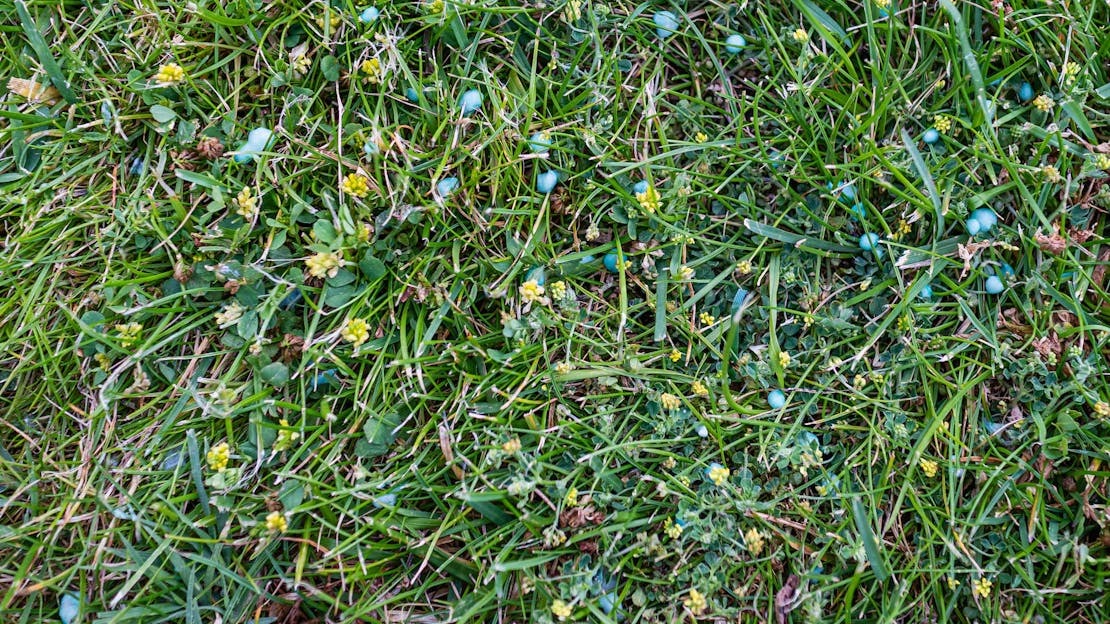
Why isn't my Lawn Fertiliser Dissolving?
Lawn fertiliser may not completely dissolve in to the grass for a variety of reasons. Most of them are good and better for a healthy lawn!
There are several issues here that will prevent granular fertiliser from dissolving into the lawn.
The type of fertiliser:
Some fertiliser is slow or controlled release which means it is designed to dissolve over weeks or months to trickle feed the grass in your lawn. Such fertilisers are Lawnsmith Natur or Lawnsmith Autumn Fertilisers.
Similarly, coated fertiliser works in the same way so that nutrients aren’t released immediately but because these are very slow release to feed over 5-6 months they will hang around much longer. Our Lawnsmith Extra-Long fertilisers work that way.
This doesn’t mean to say that controlled or slow release fertiliser don’t dissolve. Some do such as Lawnsmith Spring & Summer for Clay or Sandy Soil. These take perhaps 10 to 20 days to dissolve in good moisture conditions.
Moisture:
Without it your fertiliser, whichever fertiliser you use will start to stress or burn the grass so always ensure good moisture in the soil. If in doubt hold off until you have watered or until after sufficient rain.
The temperature:
Warm wet conditions will activate the fertiliser faster than in cold wet conditions. This is beneficial as the grass will grow more and feed more in warm conditions.
Not everything in a Bag of Fertiliser is Slow to Dissolve!
A bag of fertiliser will contain various elements, the main ones being nitrogen, phosphate and potassium. In most fertilisers only the nitrogen is slow release as this is the element that creates most of the growth and is also the most mobile and susceptible to leaching from the soil. This means you could just have a little of your feed that stays around for a while. Sometimes it's a good thing.
What will I see if my Fertiliser doesn’t Dissolve?
You won’t see an awful lot after a week or so unless you get down on to hands and knees. Most components will have dissolved leaving those insoluble ones behind to do their work slowly. They will be tucked down into the turf, safe for most pets, children and wildlife.
How Safe is this for Children, Dogs and Cats?
Immediately after application the fertiliser will have settled down into the turf and won't be easy to contact by anyone or anything walking on the lawn. After a few weeks most of the product will have dissolved and what is left poses no danger. Lawnsmith fertilisers are one of the safest on the market being mainly complex salts without harmful pesticides.
What about Mower Pick-up of the Fertiliser?
Once the fertiliser has settled into the grass it will become sticky with soil moisture and won’t normally get sucked up. If in doubt raise the mowing height a little and leave the box off the mower (if the instructions allow) for the first cut or two after feeding. If fertiliser continues to be picked up then this indicates insufficient moisture in the soil and you should raise the mowing height or water the lawn. See Watering the Lawn.
How does this Compare to Applying After-cut Once a Week?
Well, like everything else you get what you pay for. Slow or controlled release performs better, performs for longer and are generally safer. So, the initial cost is greater but over say 3 months it is feeding the grass every day for 13 weeks or 13 applications of an after-cut product. Saves time as well!
As well as these factors consider what other goodies are in the bag. Many Lawnsmith feeds contain magnesium, calcium, seaweed and sulfur contributing to a balanced diet and a healthier lawn.